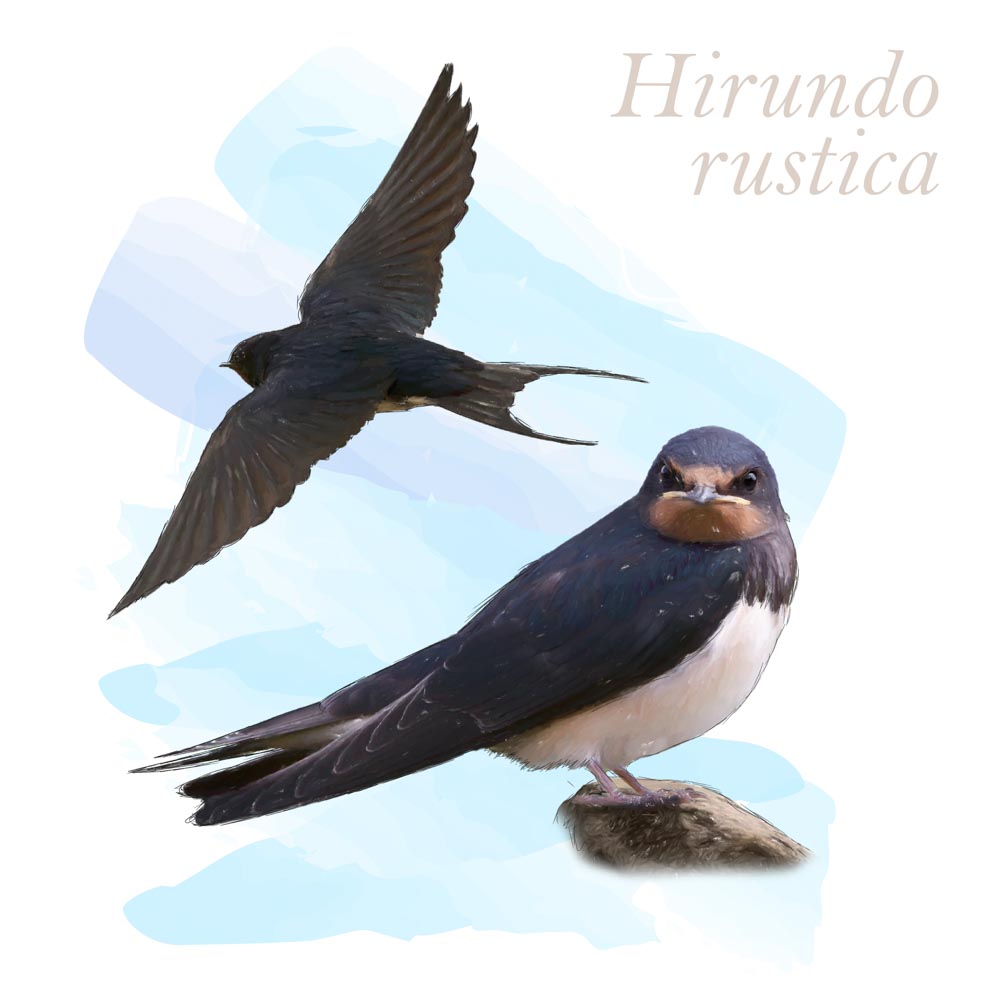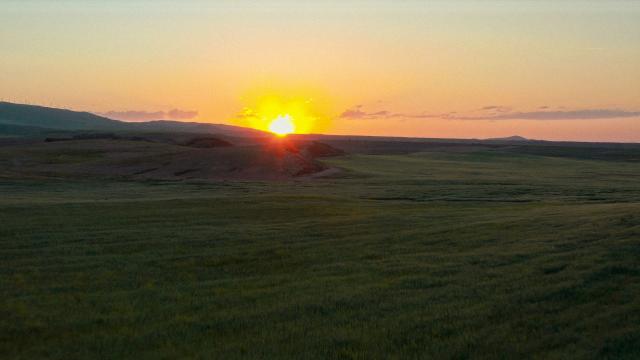Length
17-21 cm
Wingspan
32-34,5 cm
Classification
Order: Passeriformes
Family: Hirundinidae

Habitat
It nests in areas inhabited by humans, making a cup-shaped mud nest that it places under roofs, bridges and other infrastructure. Due to its proximity to man, this species is part of popular culture and its arrival in our lands is considered to herald the beginning of spring. In summer, it often hunts insects in flight at low altitude over grasslands or bodies of water.
Description
Small bird, recognizable by its long and forked tail, with long pointed wings. Short legs, wide mouth and small beak. The upperparts are blackish with certain blue highlights, like the pectoral stripe, in contrast to the ventral areas, which are entirely white. The throat and forehead are red in adults and more ochre tones in juveniles, a detail that is difficult to observe in flight.
Description
Small bird, recognizable by its long and forked tail, with long pointed wings. Short legs, wide mouth and small beak. The upperparts are blackish with certain blue highlights, like the pectoral stripe, in contrast to the ventral areas, which are entirely white. The throat and forehead are red in adults and more ochre tones in juveniles, a detail that is difficult to observe in flight.
Resident | Transient | Winter | Summer






 Chorro de la Nava
Chorro de la Nava  Meandro del Estajao
Meandro del Estajao 

 Área Natural Singular
Área Natural Singular  Las Tablas
Las Tablas 

 La Estepa
La Estepa  La Finca
La Finca 

 Fuente de los Cantares
Fuente de los Cantares  Valderrama
Valderrama